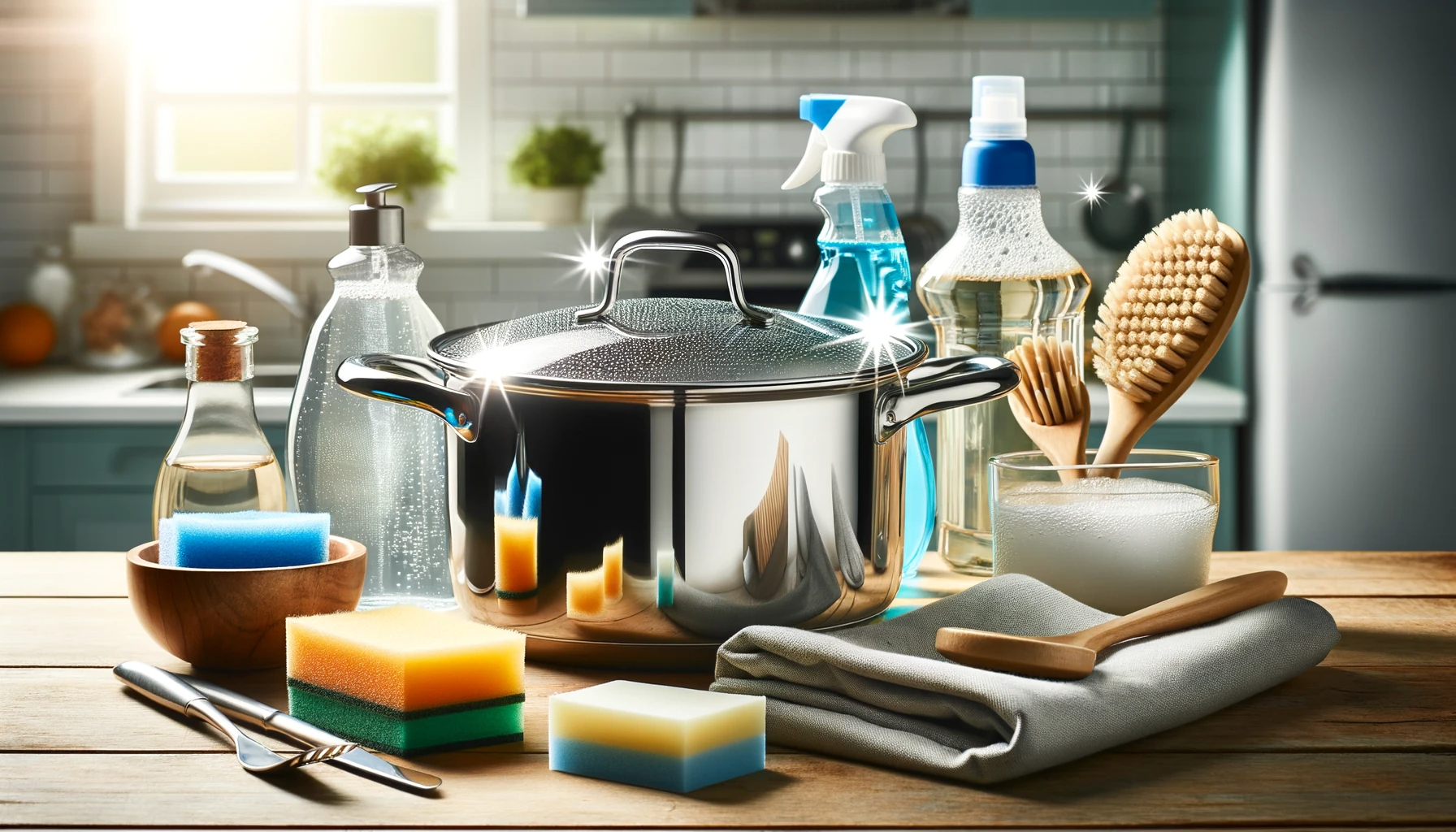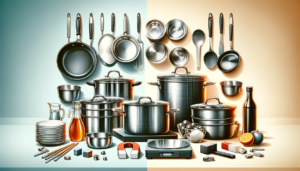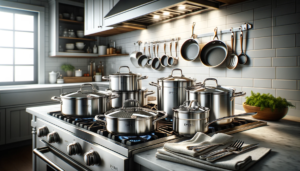Is your Farberware stainless steel cookware looking lackluster with burnt-on stains and leftover food grease? Restore it to a pristine, like-new finish with these simple cleaning techniques.
Learning the proper methods for washing Farberware stainless steel cookware prevents damage while dissolving residue for a sparkling finish.
Let’s dive into the necessary supplies and step-by-step techniques to clean your Farberware pots and pans.
How to Clean Farberware Stainless Steel Cookware?
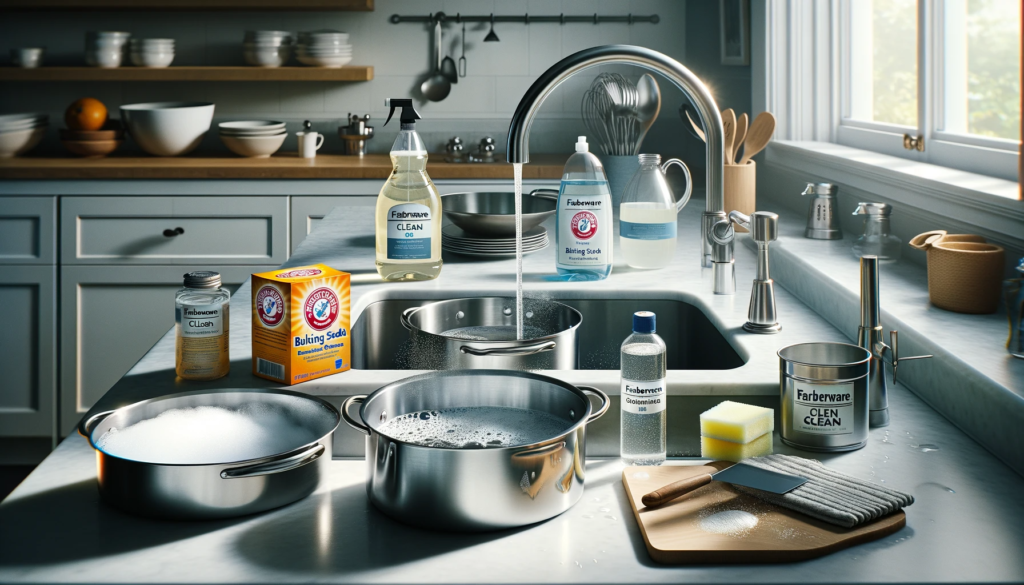
The best way to clean Farberware stainless steel cookware is to remove any excess food debris, wash thoroughly with hot soapy water, use baking soda to scrub off stuck-on residue, soak in vinegar to remove stains and odors, rinse completely, and air dry.
The key is using gentle yet effective cleaners that will not damage the durable steel surface while still cutting through grease and buildup.
As we will explore in more detail, having the proper supplies and following these straightforward steps makes removing grime from your Farberware pots and pans simple.
Implementing this routine keeps them looking pristine and performs like new for many years of delicious cooking ahead.
Supplies Needed
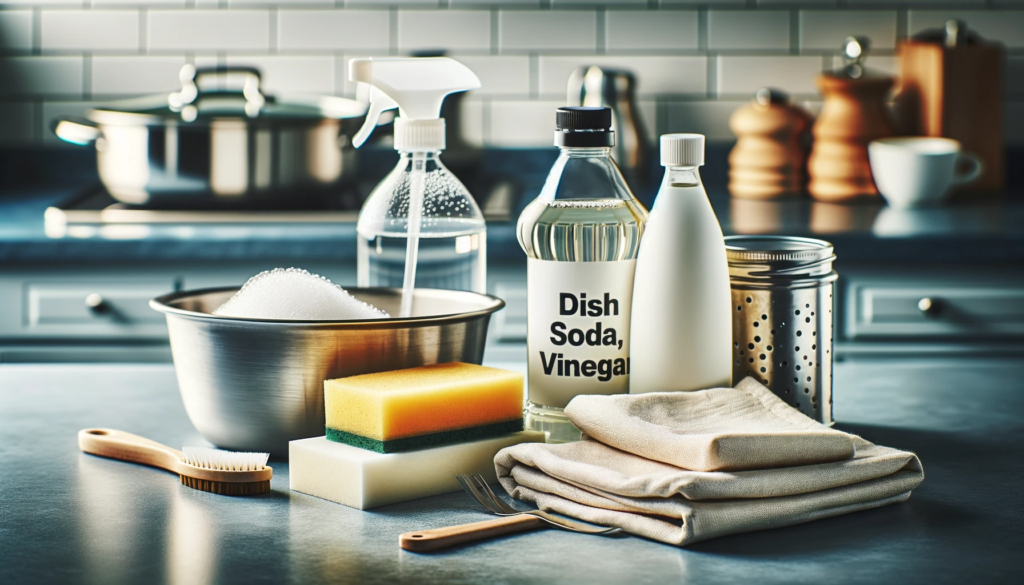
It is important to gather the proper supplies before beginning to clean your Farberware stainless steel cookware.
Having everything prepared ahead of time will make the process quicker and easier.
You will need dish soap or detergent, baking soda, vinegar, a soft sponge or dishcloth, and hot water.
Dish soap is key for breaking down oil and food residue while washing.
Any brand will do, but make sure it is free from harsh chemicals.
Baking soda functions as a gentle abrasive for scrubbing off stuck-on foods.
Plain distilled white vinegar is useful for removing discoloration and odors.
As for tools, soft sponges, dishcloths, or microfiber cloths are ideal so as not to scratch the stainless steel surface.
Lastly, hot water helps dissolve grease and loosen burnt-on debris.
Remove Excess Food and Grease
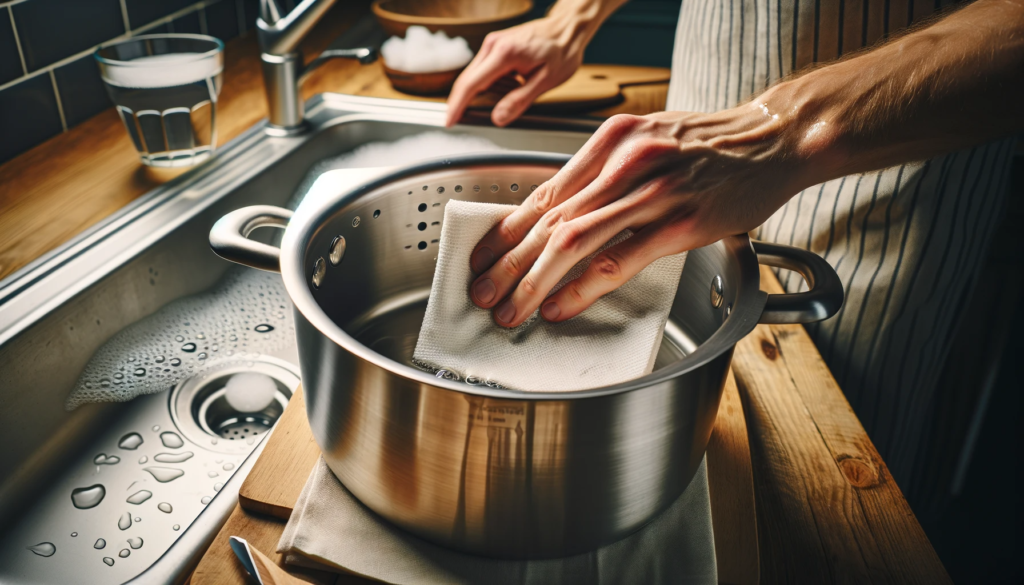
Before thoroughly cleaning your Farberware pots and pans, you first need to remove any excess or leftover food particles.
It is also important to let the cookware cool completely after use before washing.
The heat can set in stains if not given proper time to dissipate.
To remove large pieces of stuck-on food, gently wipe the surface with a paper towel.
For pots with boiling water or stock, empty the hot liquid before wiping dry.
If there is caked-on grease or food residue remaining, fill your sink or a basin with hot soapy water.
Allow your cookware to soak for at least 10 minutes so the grime softens.
The time can be extended for tougher buildup.
Just make sure to change the water if it becomes too dirty.
This process will loosen and breakdown oil and foods ahead of scrubbing.
Once done soaking, empty the water and discard any loose debris that detached during the soak.
Wash with Dish Soap and Water
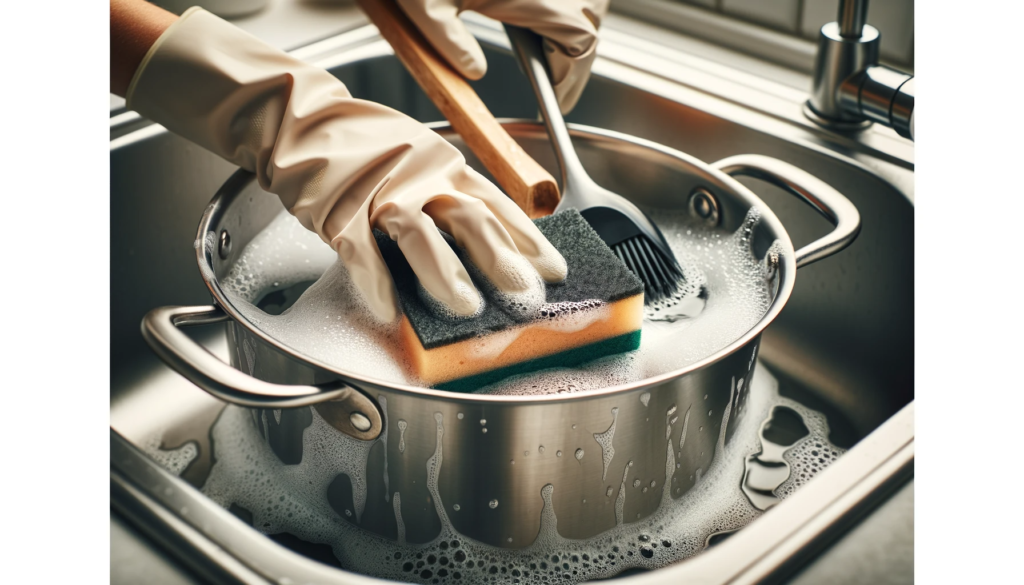
After preparing your cookware, it is time to thoroughly wash it.
Fill up your sink, basin, or tub with hot water once more.
Make sure the temperature is at a comfortable level to put your hands in for cleaning.
Add a small squirt or dollop of dish soap into the water and swish it around to form suds.
Ivory, Dawn, or other mild brands are ideal.
Gently scrub the interior of your Farberware pots and pans using a soft sponge or dishcloth.
Apply light pressure in a circular motion to lift residue without damaging the stainless steel finish.
If facing stubborn debris, allow it to continue soaking in the soapy solution.
For difficult vertical sides, angle your wrist to optimize contact with the sponge.
Be sure to clean all handles, rivets, nooks, and crannies too.
Simply rinsing will not properly dissolve grease or food buildup.
Active scrubbing is key during this washing step.
When the inner surfaces look clean, flip over your cookware to wash the outer components.
Follow the same directions by scrubbing all over with dish-soaped water.
Rinse occasionally to check your progress and relather any neglected spots.
Take extra care around protruding rivets or handles that can catch food splatter.
Avoid abrasive scrubbers during this process as well.
Once fully washed, thoroughly rinse away all soap with hot running water.
Use Baking Soda to Remove Stuck-On Residue

While hot soapy water alone can dissolve some debris, caked-on or burnt food remnants often require extra measures to remove.
This is where baking soda comes in handy.
To employ this effective cleaning method, first empty and rinse out your cookware after washing.
Make a wet paste by mixing baking soda with a small amount of water.
The quantity depends on the size of your pan and how much residue needs removing.
Use your fingers or a soft cloth to gently spread the paste onto stained or stuck-on areas inside your Farberware pots and pans.
Cover all difficult spots, especially burnt grease and food on the bottom.
Allow the baking soda paste to set for at least 10 minutes.
This gives the solution time to break down the bonds attaching debris to the stainless steel so they detach more easily when scrubbed.
For extreme cases of residue, let it sit for up to an hour.
Once the allotted time has passed, rinse your cookware under hot running water.
Gently scrub all over with your sponge or cloth to lift the loosened food bits.
The baking soda functions as a fine yet effective abrasive.
Repeat the paste-and-scrub process if needed for any leftover burnt spots.
Thorough rinsing will eliminate baking soda residue.
Utilize Vinegar to Eliminate Odors and Discoloration
While your Farberware stainless steel cookware should now be free of residue and debris, it may still contain odors, stains, or mineral deposits that detract from its appearance.
This is where distilled white vinegar comes into play as a deodorizing and brightening tool.
To employ this method, partially fill a pot or pan with water and heat to a gentle boil on the stove.
Then, stir in approximately 1 cup of vinegar per quart of water.
Turn off the heat and carefully transfer the hot vinegar solution to your soiled cookware piece in the sink.
Allow the pan to soak for at least 15 minutes as the acetic acid works to break down stains.
For tough discoloration or mineral deposits, you can reuse the solution for longer soaking periods.
Overnight is also effective.
The key is avoiding harsh scrubbing that can lead to scratching.
Once done soaking, carefully empty the vinegar solution from your cookware.
Rinse thoroughly under hot running water while wiping gently with a soft cloth.
The water should run clear once all residue dissolves.
Avoid steel wool or other abrasives during this stage.
For final elimination of vinegar scent, wash your Farberware pot or pan once more with dish soap.
Then, rinse and dry thoroughly.
Rinse Thoroughly and Air Dry

After cleaning your Farberware stainless steel cookware using one or more of these methods, take care to rinse away all solutions thoroughly.
Any leftover debris, chemical residue, or cleaning agents can impact food safety or quality when cooking.
Run hot water over the inside and outside of pots and pans for at least 30 seconds each, extending as needed.
Use your hand or dishcloth to confirm no slippery suds or products remain.
Once confident in your rinse job, avoid towel drying your cookware.
Rubbing can instill new water spots and stains over time.
Instead, position your washed Farberware pieces in a dish drying rack or arrange upside down on a towel.
Allow for complete air drying to prevent mineral deposits left behind from evaporation.
The exception is wiping dry any wooden handles or silicon grips separately with a towel to prevent cracking or mold growth.
Storing fully dried and cleaned Farberware cookware pieces soon after washing is ideal.
The stainless steel finish will shine like new while locked away in a secure cabinet or drawer.
Just inspect before first use in case new dust or residue accumulated in storage.
With proper cleaning methods and care, your Farberware stainless steel cookware should provide many years of delicious and reliable cooking performance.
Implement this routine after each use to maintain its condition.
Adjust techniques as needed for future burnt-on or stuck-on messes.
Conclusion
Properly cleaning your Farberware stainless steel cookware ensures optimal performance and longevity.
By removing all food residue, grease, discoloration and odors after each use, you allow the durable construction to shine through time after time.
Implement the effective cleaning methods outlined above as needed.
With proper care, your cookware will withstand thousands of delicious home-cooked meals for years to come.
